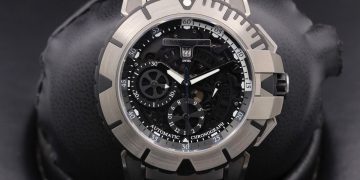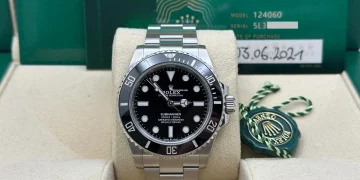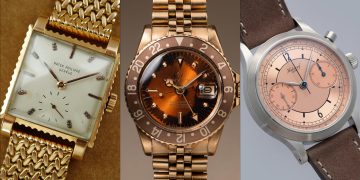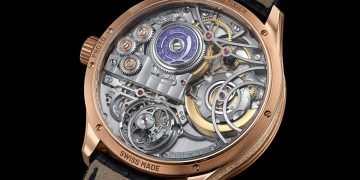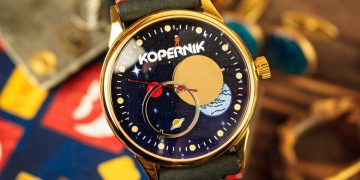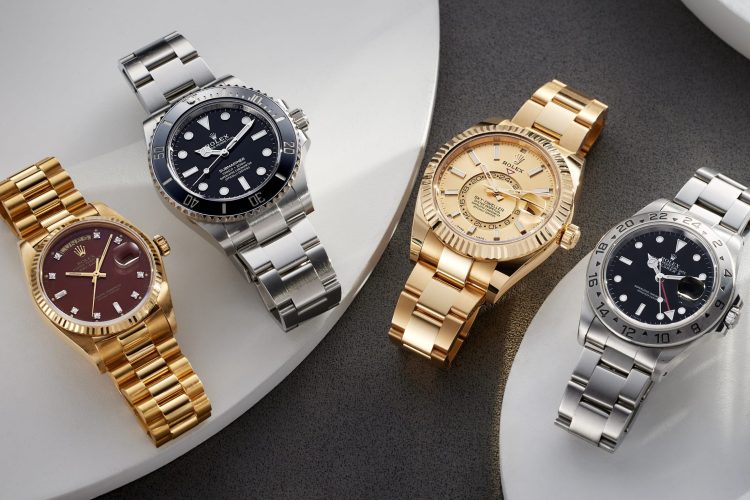In the world of luxury goods, few items carry the weight and prestige of a finely crafted luxury watch. For many, a luxury timepiece is not merely a tool to tell time, but a symbol of success, wealth, and sophistication. However, as the market for high-end watches continues to grow, an interesting shift is occurring: luxury watches are increasingly being seen as investment tools—assets that appreciate in value over time.
This dual role of status symbol and financial asset has made watches a unique item in the broader world of luxury consumption culture. But which is more dominant in shaping consumers’ decisions to buy luxury watches: the desire to signal social status or the pursuit of a sound investment?
In this article, we explore the contrasting roles of luxury watches in contemporary consumer culture—examining whether they are primarily identity symbols or if they are increasingly viewed as long-term investments. Let’s look at how these two facets intersect and influence the way wealthy consumers and collectors approach luxury watch acquisitions.
1. Watches as a Symbol of Status and Wealth
For centuries, watches have served as powerful symbols of wealth, achievement, and personal success. In a world where status is often inextricably linked to material possessions, a luxury watch speaks volumes about the wearer’s position in society. This role is perhaps most apparent in the high-profile advertising campaigns, celebrity endorsements, and exclusive clientele that surround the most prestigious watch brands.
Luxury Watches as Social Signals
Certain brands, such as Rolex, Patek Philippe, Audemars Piguet, and Richard Mille, are synonymous with luxury, and owning a watch from one of these brands sends a clear message to the world: “I have made it.” Whether at a board meeting, a charity gala, or on a yacht in the Mediterranean, wearing a luxury watch tells others that you belong to the elite, the wealthy, or the culturally significant.
- Rolex and its Cultural Significance: One of the most iconic examples of a watch as a status symbol is the Rolex Submariner. Known for its rugged sophistication, this watch is often worn by business magnates, athletes, and celebrities. The Rolex crown has come to represent achievement, and in many circles, the brand itself conveys a certain level of affluence.
- Patek Philippe and the Legacy of Luxury: A brand like Patek Philippe goes beyond mere display of wealth. Its watches, often passed down through generations, are symbols of legacy, refinement, and timelessness. Owning a Patek Philippe, especially a Nautilus or a Calatrava, is a mark of an individual who values both luxury and family heritage, and signals that the wearer has access to an exclusive world of old money and high culture.
- Audemars Piguet and the Power of Prestige: The Royal Oak from Audemars Piguet is a watch that boldly defies traditional luxury standards. Its stainless steel case and angular design challenge the conventional notion of a luxury watch, positioning it as a statement of individuality and boldness. Wearing an Audemars Piguet indicates success, but it also shows that the wearer has refined taste and a willingness to embrace innovation.
The Social Status of Watches in Pop Culture
Watches have been deeply ingrained in popular culture as symbols of wealth, often making their way into movies, music, and celebrity endorsements. High-end watches are frequently seen on the wrists of sports stars, musicians, and actors, reinforcing the association between luxury watches and affluence.
- Jay-Z and Rolex: The rapper Jay-Z has often been photographed wearing a Rolex Day-Date or a Patek Philippe Nautilus, which enhances his image as both a cultural icon and a savvy business mogul. Watches, in his case, are more than just accessories—they reinforce his success and persona in both the music industry and the luxury market.
- Paul Newman and the Rolex Daytona: The famous actor Paul Newman helped make the Rolex Daytona one of the most coveted models in the world. Newman’s involvement with the brand—especially his personal Daytona, which sold for millions at auction—has become a symbol of cult status, blending luxury, history, and celebrity culture.
2. Watches as Investment Tools: The Financial Side of Luxury Timepieces
While luxury watches have long been used as symbols of status, the growing interest in watch investment has shifted perceptions. Over the past few decades, watches have increasingly been regarded as assets that can appreciate in value, offering an alternative form of investment, especially for collectors and affluent buyers.
The Growing Market for Watch Investments
High-end watches have become one of the most lucrative investment opportunities in the world of luxury goods, with some watches appreciating in value by up to 500% in just a few years. A well-chosen luxury watch can outperform traditional forms of investment like stocks and bonds. Patek Philippe, Rolex, Audemars Piguet, and Vacheron Constantin are some of the brands that consistently see their timepieces appreciate in value, especially rare or limited-edition models.
- Patek Philippe 5711 Nautilus: The Nautilus 5711 by Patek Philippe is a perfect example of a luxury watch that not only holds value but appreciates over time. When it was first released, the watch was relatively accessible. However, due to its limited production and growing demand, the price of a Nautilus has more than quadrupled in recent years, making it one of the most profitable watches for investors.
- Rolex Daytona: Similarly, the Rolex Daytona—especially vintage models—has seen its value soar, with some versions fetching multiple times their original retail price at auction. The Paul Newman Daytona, for instance, broke records at an auction in 2017, selling for over $17 million, further establishing Rolex as an investment-worthy brand.
- Richard Mille: Known for its avant-garde designs and limited-edition releases, Richard Mille watches are highly coveted in the world of investment. A Richard Mille RM 11-03 can easily appreciate in value, and many investors are starting to see these timepieces as a way to secure long-term wealth.
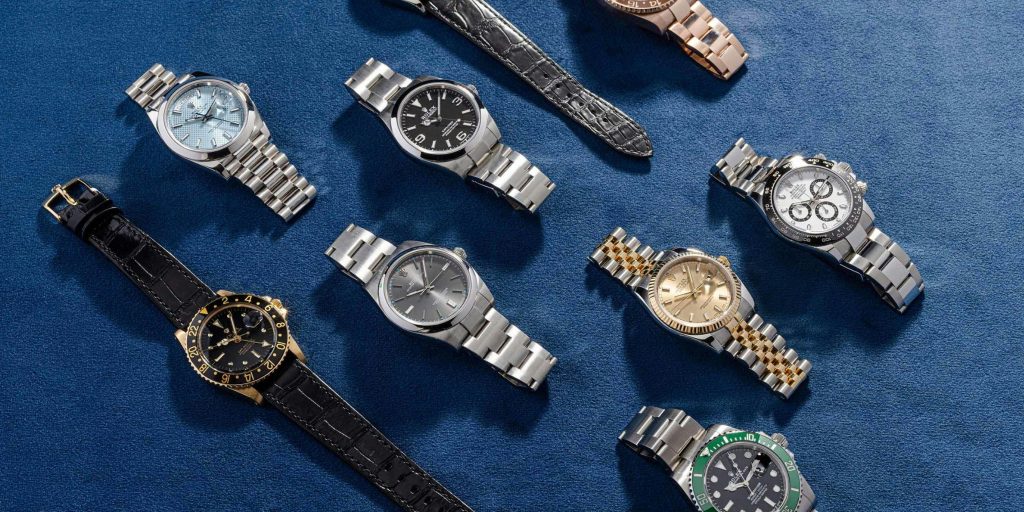
The Importance of Rarity and Condition
Like fine art or rare collectibles, the value of a luxury watch is often tied to its rarity, condition, and provenance. Watches that are limited edition or discontinued tend to have much higher resale value, as they are considered collector’s items. Moreover, watches that have been well-maintained and serviced regularly are likely to hold or even increase their value, making them highly sought after in the secondary market.
- Vintage Watches: Many collectors are turning to vintage models that have been discontinued or are no longer in production. Watches like the Rolex Submariner 6538 or Audemars Piguet Royal Oak Jumbo are prime examples of pieces that, due to their rarity and historical significance, have seen massive increases in value.
- Auction Houses and Record Sales: Major auction houses like Christie’s and Sotheby’s have seen increasing demand for rare, vintage, or iconic watches, with some watches breaking records. For example, the Patek Philippe Grandmaster Chime sold for $31 million, setting a world record for the most expensive watch ever sold at auction.
3. The Intersection of Status Symbol and Investment Tool
As luxury watches continue to be both symbols of status and investment tools, the line between the two roles becomes increasingly blurred. For some buyers, a luxury watch might fulfill both functions—offering both personal satisfaction and the potential for financial gain.
Dual Purpose Purchases
Many collectors and wealthy consumers buy luxury watches for both aesthetic appeal and as long-term investments. A Rolex Daytona may be worn proudly at events to display wealth, but over time, it may also appreciate in value, making it a financial asset. This dual purpose is perhaps one of the key reasons why luxury watch sales have remained strong, even during economic downturns. Watches retain their cultural cachet while simultaneously offering a stable form of wealth storage.
- Wearing Your Investment: For some, the enjoyment of owning and wearing a luxury watch outweighs its financial value. Even as an investment, a luxury watch is often seen as a personal pleasure—a reminder of success or a significant life milestone. In this sense, owning a luxury watch is about more than just wealth accumulation; it’s about personal satisfaction and symbolic expression.
4. Conclusion: A Dual Role in Modern Luxury Culture
Luxury watches occupy a unique position in luxury consumption culture, where they serve as both status symbols and investment tools. The enduring appeal of high-end watches is tied to their ability to signal wealth and achievement, while also offering long-term financial returns. Whether worn as a personal statement or acquired as a valuable asset, the luxury watch continues to play a central role in shaping the identity and social standing of its owner.
As the lines between luxury consumption and investment strategies continue to blur, the role of watches as both status symbols and financial assets will likely evolve. Ultimately, whether as an expression of personal style or a store of wealth, the luxury watch remains a cornerstone of global culture, a timeless blend of art, function, and investment.



